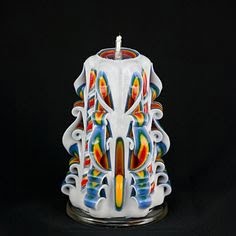Are you wondering how to clean after making candles and dealing with the messy aftermath of candle making? Candle making can be a fun and rewarding hobby, but it often leaves behind a significant mess that needs to be cleaned up.
From wax spills to soot residue, maintaining a clean workspace after candle making is essential for both safety and preserving the longevity of your supplies. In this article, we will provide you with expert tips and tricks for effectively cleaning up after making candles.
When it comes to cleaning up after a candle making session, having the right supplies on hand is crucial. From removing wax residue to tackling soot and smoke stains, we’ll cover everything you need to know about keeping your work area looking neat and tidy. We’ll also offer advice on dealing with wax and oil stains on fabrics and surfaces, as well as maintaining your equipment in top shape for future candle-making endeavors.
In the following sections, we will explore various aspects of cleaning up after making candles, including gathering the necessary supplies, removing wax residue and soot stains, cleaning your equipment, tidying up your workspace, stain removal techniques, as well as some final tips and tricks from experts in the field. Whether you’re a beginner or an experienced chandler, this comprehensive guide will help you keep your workspace sparkling clean after every candle-making session.
Gather Your Supplies
After the satisfying experience of making your own candles, it’s time to face the less glamorous part: cleaning up the aftermath. Fortunately, with the right supplies and a little know-how, cleaning after making candles can be a manageable task. In this section, we will go over the essential supplies you’ll need to ensure that your clean-up process goes smoothly.
First and foremost, you’ll want to have a good supply of paper towels or clean rags on hand. These will be crucial for wiping up spills, drips, and any excess wax residue. Additionally, you’ll need a spatula or butter knife to gently scrape off any hardened wax from surfaces. Next, having a vacuum cleaner or handheld vacuum will make it easier to remove loose wax shavings and soot from floors and workspaces.
In addition to these basic supplies, consider having rubbing alcohol or vinegar for removing stubborn wax stains, as well as dish soap or a multi-purpose cleaner for general surface cleaning. It’s also helpful to have access to hot water for melting and removing wax from tools and containers. By being prepared with these supplies, you can streamline the post-candle making cleaning process and keep your workspace looking tidy.
| Supplies | Use |
|---|---|
| Paper towels or clean rags | Wiping up spills and excess wax |
| Spatula or butter knife | Scraping off hardened wax |
| Vacuum cleaner | Removing loose wax shavings and soot |
| Rubbing alcohol or vinegar | Removing stubborn wax stains |
Removing Wax Residue
When it comes to making candles, spills and drips are almost inevitable. As a result, cleaning up wax residue is an essential part of the candle making process. Fortunately, there are several effective methods for removing wax residue from various surfaces.
One of the most common ways to remove wax spills and drips is by using a combination of heat and absorbent materials. For hard surfaces like countertops or floors, you can use a hairdryer to warm up the wax, making it easier to scrape off with a plastic scraper or putty knife. Then, place a paper towel or cotton cloth over the remaining wax and apply heat with an iron – the wax will transfer onto the paper towel or cloth.
For fabric or carpeted surfaces, start by scraping off excess wax with a plastic scraper or putty knife and then use an ice pack to harden the remaining wax. Once hardened, carefully chip away as much wax as possible before placing a paper towel over the affected area and applying heat with an iron – the paper towel will absorb the melted wax as you go.
Lastly, for glass or metal surfaces, freezing the affected area can also help in removing wax residue. Simply place an ice pack on the spilled/dripped area until the wax becomes brittle enough for easy removal.
| Surface Type | Wax Removal Method |
|---|---|
| Hard Surfaces (countertops, floors) | Heat + Absorbent Material (Paper Towel/Cotton Cloth) |
| Fabric/Carpeted Surfaces | Cold Pack + Heat + Absorbent Material (Paper Towel) |
| Glass/Metal Surfaces | Cold Pack |
Cleaning Candle Making Equipment
When it comes to candle making, cleaning your equipment is just as important as the actual process of making the candles. Properly maintaining and cleaning your tools will ensure that they last longer and continue to produce high-quality candles. Here are some tips for keeping your candle making equipment in tip-top shape.
Use Hot Soapy Water
After you have finished making your candles, the first step in cleaning your equipment is to wash them with hot, soapy water. This will help remove any leftover wax and oils from the surfaces of your tools. Be sure to use a gentle dish soap and a sponge or cloth to scrub away any residue. For hard-to-reach places, consider using a small brush to ensure all areas are thoroughly cleaned.
Deep Clean Your Melting Pots
Melting pots can quickly become coated with layers of wax, especially if you regularly make large batches of candles. To deep clean your melting pots, try using a specific wax cleaner or solvent designed for this purpose. Allow the cleaner to sit for a few minutes and then gently scrub away any remaining residue. Make sure to thoroughly rinse the melting pot with hot water once you’re done cleaning.
Inspect and Maintain Your Tools
Regularly inspecting your candle making equipment is essential for keeping it in good condition. Check for any signs of wear and tear, such as rust or corrosion on metal tools, and make sure all parts are functioning properly. Lubricate moving parts if necessary and store your tools in a dry and secure location after they have been cleaned.
By following these tips for cleaning candle making equipment, you can ensure that your tools remain in excellent condition, allowing you to continue creating beautiful candles without any hiccups. Remember that taking care of your equipment not only prolongs its lifespan but also guarantees that you maintain a safe and efficient workspace for future candle-making endeavors.
Dealing With Soot and Smoke Residue
After making candles, dealing with soot and smoke residue is often a messy part of the candle making process. While it may seem daunting at first, with the right tools and techniques, you can easily tackle the dirty side of candle making. Here are some tips to help you clean up after making candles:
- Use a vacuum cleaner: One effective way to remove soot and smoke residue from surfaces is by using a vacuum cleaner with a brush attachment. Gently go over the affected areas to pick up the residue without spreading it around.
- Try dish soap and warm water: For non-porous surfaces, mix dish soap with warm water and use a soft cloth to gently scrub away the soot and smoke residue. Rinse the area with clean water and dry it thoroughly.
- Use an eraser sponge: Eraser sponges, such as Mr. Clean Magic Eraser, can be effective in removing soot and smoke residue from walls, countertops, and other surfaces. Simply dampen the sponge and gently wipe away the residue.
In addition to cleaning up soot and smoke residue, it’s important to address any lingering odors from candle making. To do this, you can place bowls of baking soda around the affected area to absorb any unwanted odors. You can also light some odor-neutralizing candles or use air fresheners to freshen up the space.
Remember that prevention is key when it comes to dealing with soot and smoke residue after making candles. Consider using high-quality wicks and properly trim them before each use to minimize smoke production. Additionally, avoid placing candles near drafts that may cause them to produce more soot. By taking these measures, you can reduce the amount of cleanup needed after each candle making session.
Cleaning Up Your Workspace
After a satisfying candle making session, it’s important to clean up your workspace to ensure it remains tidy and safe for future crafting endeavors. Not only does a clean workspace promote creativity, but it also reduces the risk of accidents and ensures that your materials and equipment are stored properly. Here are some tips for maintaining a tidy candle making area.
Organize Your Supplies
One of the first steps in maintaining a tidy workspace after making candles is to organize your supplies. Put away empty containers, discard used items, and neatly store your tools and materials in designated areas. Consider investing in storage solutions such as shelves, bins, or drawers to keep everything easily accessible yet out of the way when not in use.
Sweep and Wipe Down Surfaces
Once your supplies are organized, sweep or vacuum any loose debris from your work area. Use a damp cloth or cleaning wipe to wipe down surfaces such as countertops, tables, and floors to remove any wax drips, spills, or other residue. This will help prevent buildup and make future cleanup easier.
Properly Store Materials
After cleaning up, take the time to properly store your candle making materials. Close containers tightly, seal bags securely, and ensure that flammable items are stored safely away from heat sources. Properly storing your materials not only keeps your workspace tidy but also helps extend the shelf life of your supplies.
By following these tips for maintaining a tidy candle making area, you can ensure that your crafting space remains clean and organized for all of your future creative endeavors. And remember to refer back to our previous sections on how to clean after making candles for even more helpful tips.
Stain Removal
When making candles, it’s common to encounter wax and oil stains on fabrics and surfaces. These stains can be tough to remove if not addressed properly. Here are some tips for getting rid of wax and oil stains effectively:
1. Scrape off excess wax: If you spill hot wax on fabric or a surface, let it cool and harden before gently scraping off as much as you can with a blunt tool like a butter knife or spoon.
2. Use an iron and paper towels: Place a few layers of paper towels over the stained area, then carefully run a hot iron over the paper towels. The heat will cause the wax to melt and transfer onto the paper towels, effectively removing it from the fabric or surface.
3. Wash with dish soap: For oil-based stains, such as essential oils used in candle making, apply a small amount of dish soap to the stained area and gently rub it in. Let it sit for several minutes before washing the fabric with warm water.
If you’ve encountered stubborn wax or oil stains on surfaces like countertops or tables, consider using commercial cleaners specifically designed for these types of stains. Always test any cleaning products on a small, inconspicuous area first to ensure they won’t cause damage.
Remember that prevention is key when it comes to keeping your workspace clean after making candles. Lay down protective coverings like parchment paper or plastic sheets to catch any spills or drips, and always clean up any messes as soon as they occur to prevent them from setting in. By following these tips, you can ensure that your fabrics and surfaces stay stain-free after indulging in your candle-making hobby.
Whether you are new at this crafting activity or have been creating your own candles for a while now-cleaning up after making candles can be relatively easy by adding these simple habits into your routine.
Final Tips and Tricks
In conclusion, cleaning up after making candles may seem like a daunting task, but with the right tools and techniques, it can be a relatively easy process. By following the tips outlined in this article, you can ensure that your workspace, equipment, and fabrics remain clean and free from wax residue and soot.
One of the key aspects of cleaning up after making candles is having the right supplies on hand. From paper towels and hot water to rubbing alcohol and vinegar, having these items readily available can make the cleaning process much smoother. Additionally, using a heat gun or hairdryer to remove wax spills and drips can also be extremely helpful in getting rid of stubborn residue.
It’s important to remember that maintaining a tidy candle making area not only makes cleanup easier but also contributes to a safer working environment. By regularly wiping down surfaces and disposing of leftover wax properly, you can prevent buildup and minimize the mess after each candle making session. With these final tips and tricks, you’ll be well-equipped to achieve a sparkling clean space after every candle making experience.
Frequently Asked Questions
What Is the Easiest Way to Clean Candle Making Supplies?
The easiest way to clean candle making supplies is to use hot, soapy water. You can fill a sink or bucket with hot water and dish soap, then soak the supplies for a few minutes.
After that, simply scrub them with a sponge or brush to remove any wax or residue. Rinse thoroughly and let them air dry before using them again.
How Do You Clean Dust and Dirt Off Candles?
To clean dust and dirt off candles, you can gently wipe them with a soft cloth or paper towel. Be careful not to press too hard, as this can damage the surface of the candle.
If there are stubborn spots, you can use a damp cloth with mild soap to gently clean the affected areas. Just be sure to dry the candles completely before lighting them again.
What Is the Best Way to Wash Candle Wax?
The best way to wash candle wax is by using hot water and dish soap. Start by scraping off as much wax as possible from the surface using a blunt tool like a butter knife or spoon. Then, pour boiling water over the remaining wax to soften it, and add dish soap directly onto the affected area.
Scrub with a sponge or brush until all the wax is removed, then rinse thoroughly with hot water. Repeat if necessary until all traces of wax are gone.

Welcome to my candle making blog! In this blog, I will be sharing my tips and tricks for making candles. I will also be sharing some of my favorite recipes.





